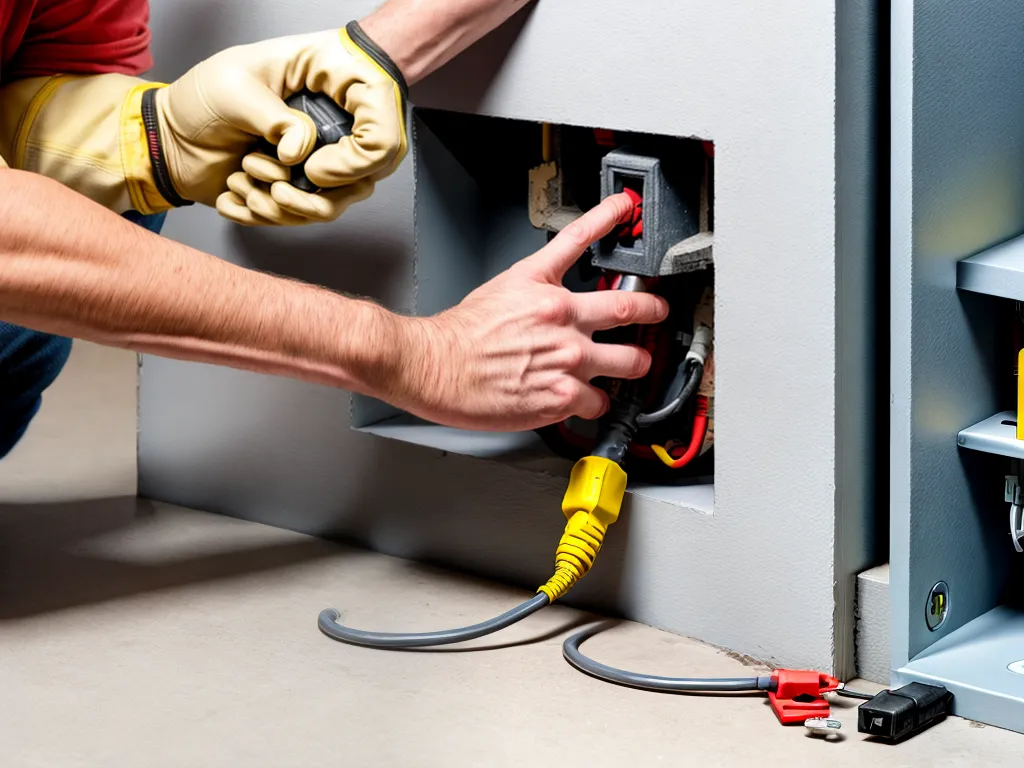
How to Install a 230 Volt Outlet Safely
Installing a 230 volt outlet in your home can provide power for large appliances like electric ranges, dryers, air conditioners, and hot tubs. However, working with 230 volt electricity poses a safety risk if not done properly. Follow these steps to safely install a 230 volt outlet:
Choose an Appropriate Location
When deciding where to put a 230 volt outlet, bear in mind the following:
-
It should be located close to the appliance you want to power, but not directly behind the appliance. This makes the outlet accessible.
-
It must be installed on its own dedicated circuit breaker in the main electrical panel.
-
Current electrical code requires it to be installed at least 12 inches above the floor.
-
It should not be installed in a bathroom or other wet location unless it contains a waterproof cover and is connected to a ground fault circuit interrupter (GFCI) breaker.
The best places to install a 230 volt outlet are in the kitchen, laundry room, garage, or utility room.
Turn Off Power at the Breaker Panel
Before doing any electrical work, you must switch off the main breaker in your electrical panel to cut power to the entire house. This prevents the risk of electrocution.
Always double check with a voltmeter that the circuit you'll be working on has no power flowing through it.
Install the Appropriate Circuit Breaker
For a 230 volt circuit, you'll need a two-pole circuit breaker designed for 230 volt service. The amperage rating of the breaker must match the power demands of the appliance you're connecting.
For example, an electric range or dryer will need a 30 amp or 50 amp two-pole breaker. An air conditioner may only require a lower 15 amp or 20 amp breaker.
The circuit breaker must be inserted into spaces along with a metal tab that connects both poles. Do not overload the panel by squeezing in a breaker without enough spaces. This is a fire hazard.
Run and Connect the Cable
From the breaker panel, run 6/3 NM cable with ground wire to the outlet location. This cable contains three wires - two hot wires, a neutral wire, and a ground wire.
The ground wire connects to the outlet box itself while the hot wires and neutral connect to the outlet. Make sure to secure the cable with proper cable clamps and connectors.
Do not run the NM cable within 1 1/4 inches of the service panel or within 1 inch of any air ducts or gas lines, as required by code.
Wire and Mount the 230 Volt Outlet
Connect the black and red wires to the brass screws, the white wire to the silver screw, and the ground wire to the green screw or ground connector.
Use a NEMA 6-30 outlet for a 30 amp circuit or NEMA 6-50 outlet for a 50 amp circuit. Secure the outlet into the box with long screws through the mounting ears.
Attach the wall plate cover. Make sure the outlet is mounted with the ground pin on top to match the appliance plug.
Test and Switch the Power Back On
With the breaker still off, use a voltmeter to confirm no power is flowing to the new circuit. Then switch the main breaker back on.
Go to the new 230 volt breaker, switch it on, and test that power flows to the new outlet. Finally, switch on the appliance and verify it powers up properly.
If you receive any shock or the breaker trips when switching the power on, immediately flip it back off and re-check your wiring connections.
Having the proper 230 volt outlet will allow you to power large appliances safely. But always exercise caution and turn power off before doing any electrical work. Consult an electrician if you have any doubts about your ability to install the outlet correctly.